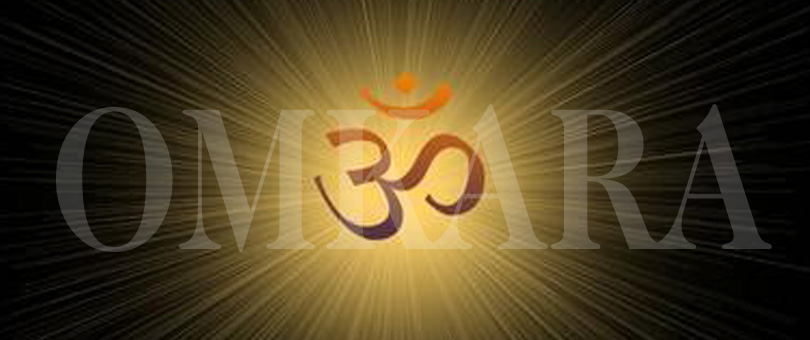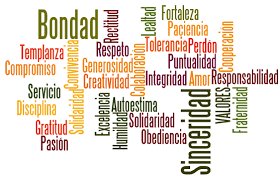
Omkara…
"Om ithyekaksharam Brahma, the single letter OM is Brahman Itself, said Bhagawan explaining the purport and supreme significance of the Pranava Mantra. What does the Mantra stand for and what are its special significance. Bhagawan explained the same in a Divine discourse delivered on 1 October 1984 at the Poornachandra Auditorium in Prasanthi Nilayam.
Manthra is not a mere collection of words. It is a compounded set of words pregnant with enormous significance. It emanates from the inner power of man. Filled with such power, the manthra (sacred formula), when it is pronounced properly, brings out the Divine power in man.
The vibrations produced by the utterance of the manthra, uniting with the Cosmic nada (primal sound) in the Universe, become one with the Universal Consciousness. It is these Cosmic vibrations which assumed the form of the Veda (sacred revelations of spiritual knowledge).
For all the manthras, the primary manthra, which enshrines the attributeless, Omniself, is the Omkara. The Omkara embodies in the form of sound the Supreme Brahman. For this sound, the presiding deity is Saraswati. In common parlance Saraswati is regarded as the consort of Brahma (Demi God of Creation). It is the union of Brahma and Saraswathi that accounts for all the knowledge in the world. Who is Brahma and who is Saraswathi? Saraswathi is commonly worshipped as the Goddess of speech and as the deity who has to be propitiated for acquiring knowledge. She is also described as Varade (the giver of boons) and as Kamaroopini (one capable of assuming any form). But Saraswathi is not one who conforms to these descriptions. Saraswathi is present in all beings as the Goddess of Speech.
Omkara is the manifesting of Brahman as sound
The body is regarded as Brahma and the tongue is regarded as Saraswathi and the vibrations emanating from the heart find expression in sound through the union of the body and the tongue.
Although there are many letters and words, the fundamental aksharam (letter), which has primacy of place, is the Omkara. "Om ithyekaaksharam Brahma (the single letter OM is Brahman Itself) 'says Bhagavad Gita. All other letters and words are linguistic creations. They do not possess the unique sacredness and divine character of 'OM'. The special significance of 'OM' is not generally recognised or understood.
The Manthra Shasthra (ancient scripture related to sacred formulas) has laid emphasis on the letter 'OM'. Omkara has no form. It is the manifestation of Brahman as sound. It is present in all creation. It is effulgent. It is in all speech. It is ever blissful. It is Paraathparamayee (embodiment of the Supreme). It is Mayamayee (the repository of illusory power). It is Shreemayee (embodiment of prosperity). The Omkara is the only sound that has these 'eight divine attributes, according to the Manthra Shasthra.
Only by elimination of ego can Brahman be realised
What is the difference between the Omkara and all other sounds and words? The Omkara has a unique, distinctive quality in the way it is pronounced and the goal it represents. When other letters are uttered, the lips, the tongue, the cheeks and the jaws are in action. But when the Omkara is 'pronounced, none of these move at all. This is a unique characteristic of Omkara.
Hence 'OM' alone can be regarded as Aksharam (imperishable). All the other sounds are expressions of different languages.
The Omkara is the base for the Veda. To. grasp the full significance of Omkara, which is all pervasive, it is necessary to have the same kind of self-control which one has to exercise to bring the sensory organs under control.
In reciting any manthra the primacy to be accorded to OM should be recognised. The manthra ends with the word Namah (as for example, in Om Keshavaya Namah: Prostrations to Keshava). In the manthras Keshavaya namah, Govindaya namah, Narayanaya namah, the significance of Namah which occurs at the end of each manthra should be noted.
The worshipful attitude signified by the term Namah will be lost if the word Om is not used at the beginning of each manthra. It is only when Om is said at the beginning and Namah at the end that the full purport of the manthra will be brought out. The integral connection between Om and namah should be recognised. Namah represents Prakrithi (objective world). In ordinary parlance Namah is understood to mean namaskaram (salutation). But it has a wider meaning. It means Prakrithi (the phenomenal world). OM connotes Purusha (Divinity). The purpose of the manthra is to reveal the connection between Prakrithi and Purusha. Based on the inner significance of this, the Mahaavakya (great declaration) Thath Thwam Asi (That Thou Art) has to be understood. Asi is the link between "Thath" and Thwam. In Aham Brahma asmi, Asmi provides the link. In the Mahavakya Prajnanam Brahma, Asi does not figure.
Only by elimination of ego can Brahman be realised
If in the manthra Om Keshavaya Namah the word Keshavaya is omitted, and Om Namah is uttered, the unity of Shiva-Shakthi (Purusha and Prakrithi) is established and the dualism implicit in the manthra is removed. The manthra states, "I am offering obeisance to Keshava," thereby positing two entities, besides the action of obeisance itself being a third element.
To eliminate this dualism, the Manthra Shasthra laid down that if instead of namah, na mama (not for my sake) is employed, the identity of the worshipper and the worshipped will be established. "Om Keshavaga, na mama" would mean "for Kesava, not for me." By this process, the ego is destroyed. And only by the elimination of the ego can the attributeless Brahman be realised.
II Samastha Lokah Sukhino Bhavantu II
TEXTO TOMADO DE: http://www.theprasanthireporter.org/2012/11/omkara/






















No hay comentarios :
Publicar un comentario